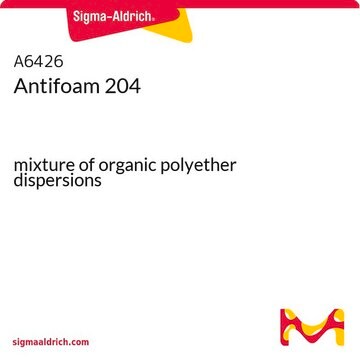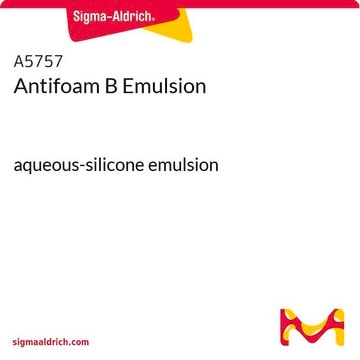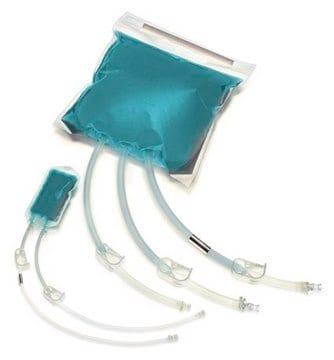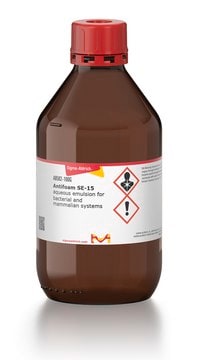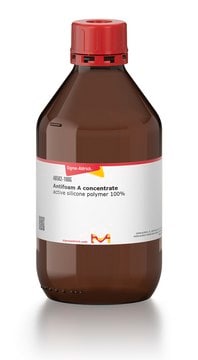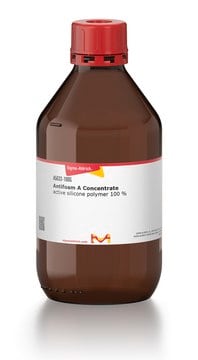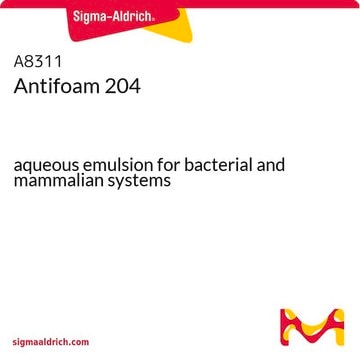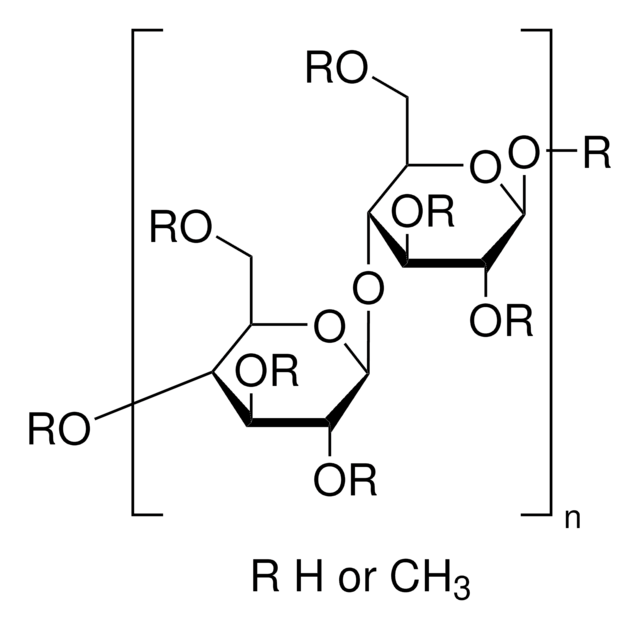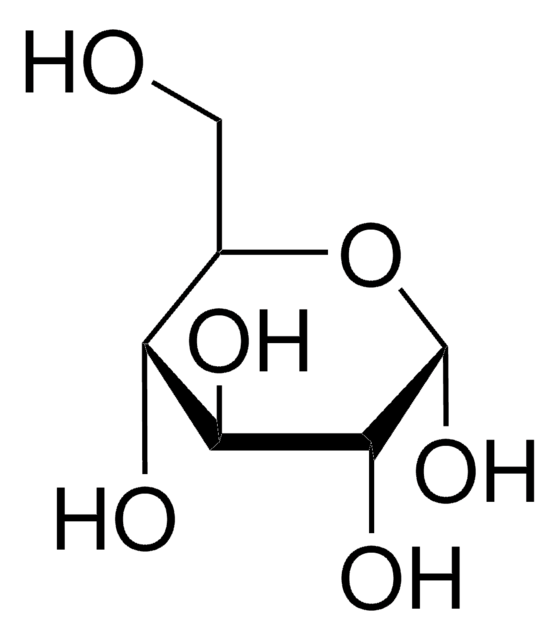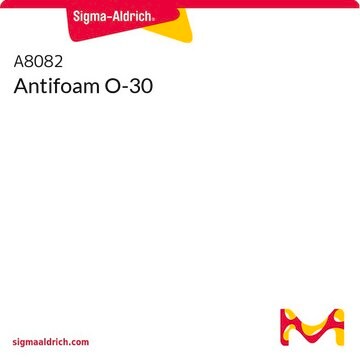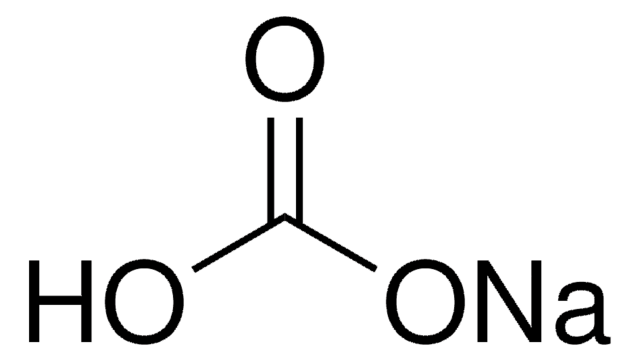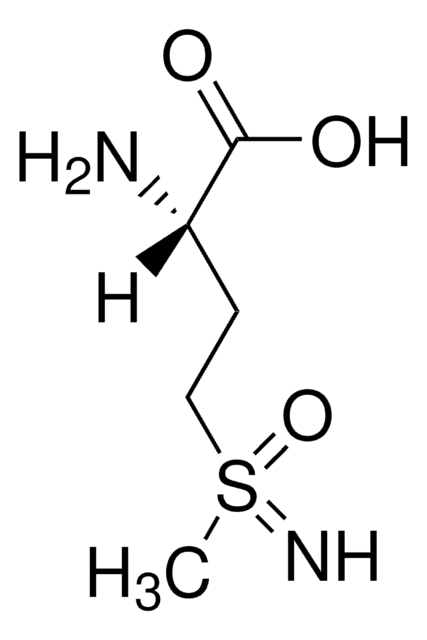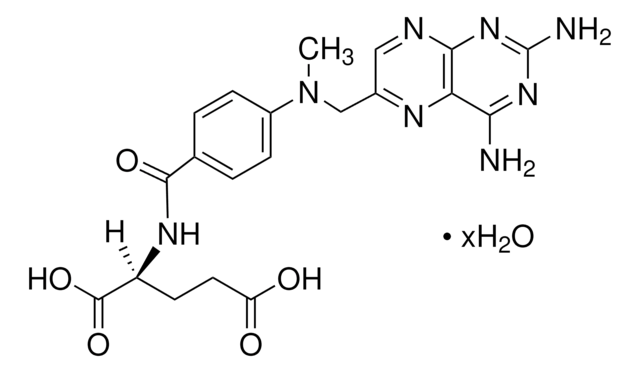추천 제품
생물학적 소스
synthetic
Quality Level
양식
emulsion
포함
emulsifier
기술
cell culture | hybridoma: suitable
microbiological culture: suitable
mp
0 °C (32 °F)
일반 설명
Antifoam C emulsion is an aqueous emulsion containing 30% active silicone. This silicone-based antifoam emulsion consists of non-ionic emulsifiers different from those in antifoam emulsions B and Y-30. Antifoam C emulsion can be prediluted with 3-10 parts of cool water to aid in dispersion. Prediluted suspensions should be used immediately. Antifoam C emulsion is typically effective at 1-10 ppm. The flow properties of antifoam C emulsion are such that it can be pumped on an as-needed basis to a fermenter system with sufficient agitation to disperse the antifoam. Antifoam C emulsion can be used to regulate headspace foaming in mammalian cell culture bioreactors up to 30 ppm concentration.
애플리케이션
Antifoam C emulsion has been used:
- as a supplement in RO-H2O and a chemically defined culture medium to determine volumetric mass transfer coefficient (kLa) of mammalian cell culture
- as a component of feed medium,
- as a steam-sterilized antifoaming agent in a biocontroller for pH-stat fed-batch cultivations
- as a supplement in fed batch medium to mimic the typical large-scale cultivation conditions
특징 및 장점
- Minimizes compatibility issues with biological systems
- Highly effective defoamer at low concentrations
- Highly effective and versatile silicone defoamer
기타 정보
A 30% aqueous emulsion of polydimethylsiloxane concentrate.
For additional information on our range of Biochemicals, please complete this form.
신호어
Warning
유해 및 위험 성명서
Hazard Classifications
Eye Irrit. 2 - STOT SE 3
표적 기관
Respiratory system
Storage Class Code
10 - Combustible liquids
WGK
WGK 3
Flash Point (°F)
Not applicable
Flash Point (°C)
Not applicable
개인 보호 장비
Eyeshields, Gloves, type ABEK (EN14387) respirator filter
이미 열람한 고객
Bernhard Sissolak et al.
Biotechnology journal, 14(7), e1800714-e1800714 (2019-04-16)
Frequently measured mammalian cell culture process indicators include viability and total cell concentration (TCC). Cell lysis, an additional important process characteristic that substantially contributes to the overall product purity profiles, is often not addressed in detail. In the present study
Gang Fu et al.
Biotechnology and applied biochemistry, 67(5), 812-818 (2019-10-08)
d-Psicose 3-epimerase is an enzyme that catalyzes the synthesis of d-psicose from d-fructose. We cloned the d-psicose 3-epimerase from Ruminococcus sp. (RDPE) and expressed it in Bacillus subtilis A311. By a two-step pH regulation of segmented fermentation, we significantly improved
Characterizing the Effects of Antifoam C Emulsion on Oxygen Mass Transfer within the BIOne Drilled-Hole Sparger and Microsparger Single-Use Bioreactor Systems
McAndrew J and Kauffman G
American Pharmacy null
Mervyn W O Liew et al.
Journal of biotechnology, 150(2), 224-231 (2010-08-28)
This study demonstrates the feasibility of large-scale production of murine polyomavirus VP1 protein in recombinant Escherichia coli as pentamers which are able to subsequently self-assemble in vitro into virus-like particles (VLPs). High-cell-density pH-stat fed-batch cultivation was employed to produce glutathione-S-transferase
Bernhard Sissolak et al.
Journal of industrial microbiology & biotechnology, 46(8), 1167-1178 (2019-06-09)
Recombinant monoclonal antibodies are predominantly produced in mammalian cell culture bioprocesses. Post-translational modifications affect the micro-heterogeneity of the product and thereby influence important quality attributes, such as stability, solubility, pharmacodynamics and pharmacokinetics. The analysis of the surface charge distribution of
자사의 과학자팀은 생명 과학, 재료 과학, 화학 합성, 크로마토그래피, 분석 및 기타 많은 영역을 포함한 모든 과학 분야에 경험이 있습니다..
고객지원팀으로 연락바랍니다.